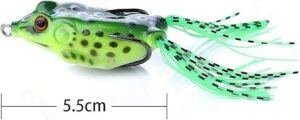Guide To Rod And Reel Maintenance
Introduction:
As anglers, our rods and reels are not just tools but extensions of ourselves, essential for the pursuit of our passion. Yet, amidst the anticipation of our next fishing adventure, it’s easy to overlook the maintenance of these crucial components. In this comprehensive guide, we’ll delve deep into the world of rod and reel maintenance, exploring the importance of regular upkeep, the multitude of benefits it brings, and detailed step-by-step instructions on how to keep your gear in prime condition for years to come.
I. Rod Maintenance
A. Inspection:
Before embarking on any fishing trip, it’s imperative to conduct a thorough inspection of your fishing rod. Start by visually examining the entire length of the rod, paying close attention to the rod blank and guides. Look for any signs of damage, such as cracks, chips, or nicks, which can compromise the structural integrity of the rod. Run your fingers along the rod blank to detect any rough spots or imperfections that may have gone unnoticed during visual inspection. Additionally, inspect the guides for any signs of wear, such as loose or missing inserts, which can cause friction and damage to your fishing line.
B. Cleaning:
Regular cleaning is essential for maintaining the performance and longevity of your fishing rod. Begin by removing any dirt, debris, or fishing line residue that may have accumulated on the rod blank and guides. A soft cloth dampened with water or a mild soap solution is ideal for this purpose. Gently wipe down the entire length of the rod, taking care to remove any stubborn residue. For stubborn dirt or grime, a soft-bristled brush can be used to gently scrub the affected areas. Avoid using abrasive cleaners or harsh chemicals, as these can damage the finish of your rod. Once clean, rinse the rod thoroughly with fresh water and pat it dry with a clean towel to remove any excess moisture.
C. Protection:
To ensure your fishing rod remains in pristine condition between trips, it’s essential to take proactive measures to protect it from damage. After cleaning, apply a thin layer of rod protectant or wax to the rod blank to provide an additional barrier against scratches and corrosion. Be sure to use a product specifically designed for fishing rods, as other types of protectants may contain chemicals that can damage the rod’s finish. Once applied, buff the protectant into the rod blank using a soft cloth to ensure even coverage. Additionally, store your fishing rod in a protective case or rod sock when not in use to minimize the risk of accidental damage during transportation or storage.
II. Reel Maintenance
A. Disassembly (if applicable):
While not all fishing reels are designed to be disassembled by the user, some models allow for easy access to internal components for cleaning and maintenance. If your reel permits, consider disassembling it periodically to remove dirt, debris, and old lubricant that may have accumulated over time. Begin by removing any side plates, spools, or other removable parts according to the manufacturer’s instructions. Take care to organize and keep track of all screws, washers, and other small components to avoid losing them during disassembly. Once disassembled, use a soft brush or compressed air to remove any dirt or debris from the internal components, taking care not to damage any delicate parts.
B. Cleaning:
With the reel disassembled, it’s time to clean each component thoroughly to remove any dirt, debris, or old lubricant that may have accumulated over time. Begin by wiping down the exterior of the reel with a damp cloth to remove any surface dirt or grime. Pay close attention to areas where dirt tends to accumulate, such as around the handle or under the spool. For stubborn dirt or grime, a soft-bristled brush can be used to gently scrub the affected areas. Once the exterior is clean, focus on cleaning the internal components, such as the gears, bearings, and drag system. Use a soft brush or compressed air to remove any dirt or debris from these areas, taking care not to damage any delicate parts. Once clean, apply a small amount of reel oil or grease to lubricate the moving parts and ensure smooth operation.
C. Lubrication:
Proper lubrication is crucial for ensuring the smooth operation and longevity of your fishing reel. After cleaning, apply a small amount of reel oil or grease to the bearings, gears, and other moving parts according to the manufacturer’s instructions. Be sure to use a lubricant specifically designed for fishing reels, as other types of lubricants may contain additives that can damage the reel’s internal components. Take care not to over-lubricate the reel, as excess oil or grease can attract dirt and debris, leading to performance issues. Once lubricated, reassemble the reel according to the manufacturer’s instructions, taking care to properly seat all components and tighten any screws or fasteners to the appropriate torque specifications.
III. Conclusion
Maintaining your fishing gear is not just a chore; it’s a responsibility that ensures the longevity and performance of your equipment for years to come. By following the comprehensive maintenance tips outlined in this guide, you can keep your rods and reels in prime condition, ready to tackle any fishing challenge that comes your way. So, take the time to care for your gear, and it will reward you with countless memorable fishing experiences on the water.



